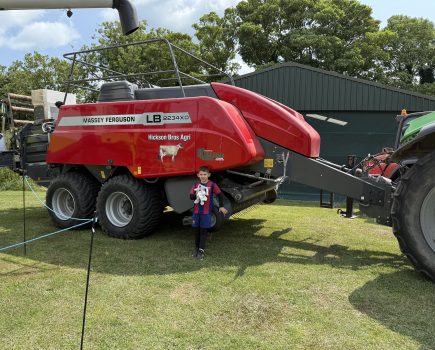Our winter barley harvest in the south is about finished. The early Craft samples that were hopefully going to make malting didn’t! Retention is too thin and screenings are too high, but those cut later are just about OK, from 80% to 85% retained with nitrogen under 1.85.
I’ve been looking at spring barley in Hampshire, Berkshire and Gloucestershire. These are three to four weeks away, so they won’t be ready until the second or third week of August. They look shorter in the straw and thinner than usual, so while the grain count in the ear looks ok, I cannot see them reaching the high yield figures that some had last harvest. I think they will be nearer the six tonne per hectare mark.
There have been some huge yields reported on winter feed barley, some achieving nine to ten tonnes per hectare. Danish spring malting barley prices eased following rain, which may have arrived just in time, but it’s still believed that they may have lost up to 30% of yield already. The usually dependable French autumn sown spring barley is very poor, with low retention and high screenings. Some of their traditional spring sown barley is OK and some is not, but it’s not complete yet. Either way both Scandinavia and France will have less spring malting barley to bring to the European party.
We may have a real dichotomy in the malting barley market. Brewers and maltsters throughout Europe will just not buy new crop as they are long of old crop malting barley, malt and beer. They are talking of this next year as being only an eleven month year rather than twelve in terms of demand.
Despite that, the nominal malting premium remains ridiculously high. If it was actually trading it could be as high as £60 to £70 per tonne, but that’s academic because it is not trading yet. If you look around Europe, nowhere, apart from England, is there a malting barley crop where you could say it’s going to be good. Yet sooner or later the end user will have to come to the trough! Meantime most proper malting barley producers will be waiting to see what they get and tucking it away. It may be a case of who blinks first after harvest.
Last month I said the Black Sea pantomime had become boring. Some traders thought that Russia not re-opening the grain corridor would be bearish to the market. However, subsequent attacks on grain storage infrastructure, plus the threat to maybe target grain carrying vessels, has frightened the market, creating an opportunity to sell into a rising market for a change.
In the bigger barley picture, it looks like we will have 12 million tonnes fewer globally from this harvest. The apparent done deal for Australia to take over the French role as their leading barley supplier is still not finalised. China has now raised the issue of the USA expanding its military operations in the Pacific. It may be a coincidence, but a large number of boats destined for China have just appeared at big French ports, causing short term covering interest. Of course, if France were to somehow still retain a slice of the Chinese business that would again change the dynamic of European barley and the current malting premium would narrow, with feed improving in price.
None of the countries I highlighted last month as having weather problems have really improved. Even the US maize, where after a better spell of weather the USDA was forecasting a ridiculously larger crop, has deteriorated. Note, maize was still officially 64% in drought in the middle of July.
So nowhere in the world do the crops look better than they did a month ago, except for maybe some in the UK, so my advice is unchanged; use your storage. Most have sold what they need for harvest space or cash, with some forward sales above the current market, so if you have more, that’s a bonus to sell. It’s all about the weather elsewhere.
Then finally you have the consumer. They have watched their raw material cost fall £100 per tonne since May 2022 and so for the past six months they have been buying hand to mouth spot and taking very little forward cover. So, they have been either very clever, very stupid or very greedy. Time will tell, but the farmer has the trump card of not having to sell spot. Just let the weather and political issues percolate.
For more like this, sign up for the FREE South East Farmer e-newsletter here and receive all the latest farming news, reviews and insight straight to your inbox.







